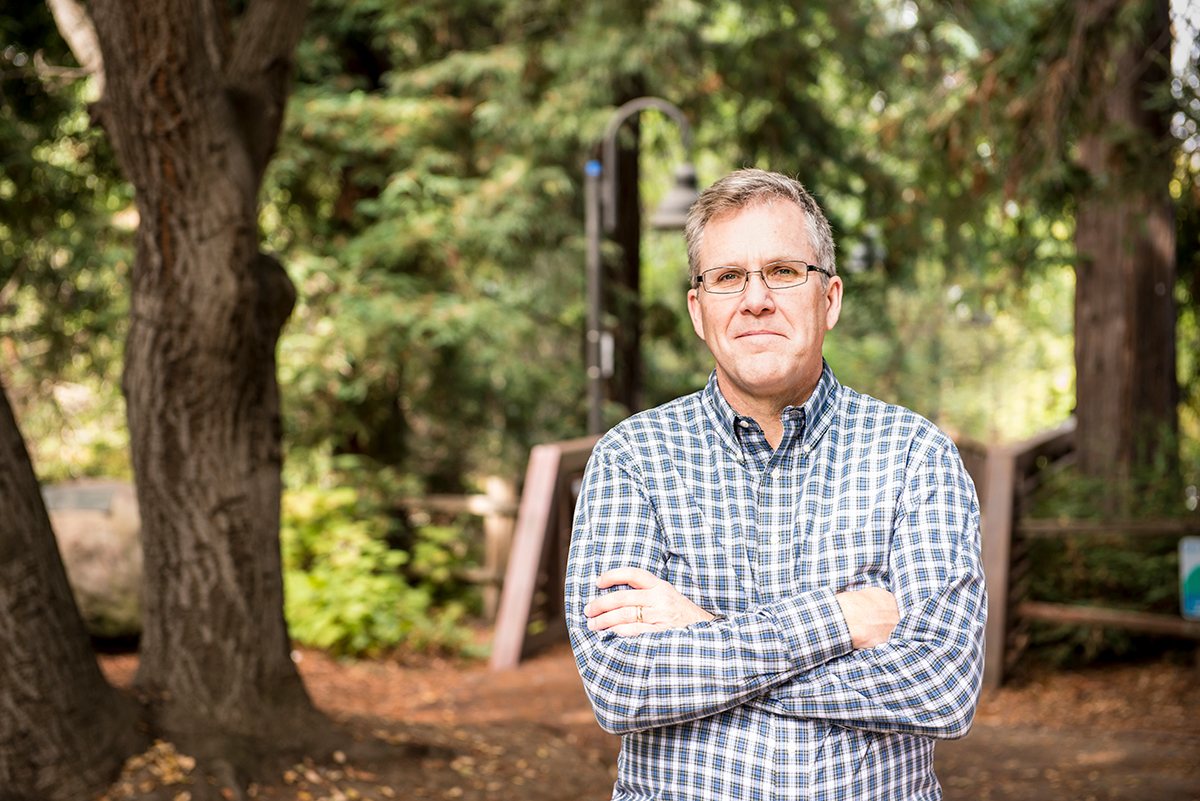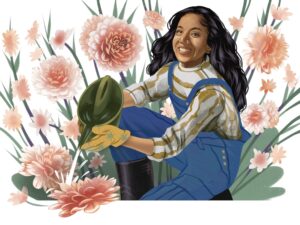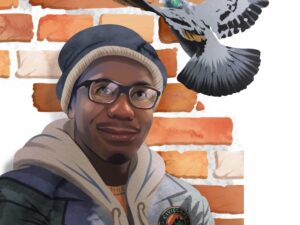alter Moore can show you the place where he first understood the power of a local land trust. We’re walking at Bair Island along a shoreline trail over the site of what 30 years ago was a salt plant slated for residential development. But in 1997 the Peninsula Open Space Trust, which Moore had just joined as general counsel, bought the 3,000 acres of land and turned it over to the United States Fish and Wildlife Service to restore as part of the national wildlife refuge. Now Moore is pointing out pelicans as they soar over restored baylands, and great egrets as they pick through the growing wetland.
Moore began volunteering for the Peninsula Open Space Trust in 1993, took a job as its general counsel in 1995, and became the organization’s president in 2011. Over his tenure, POST has protected more than 75,500 acres of open space, farms, and parkland around Silicon Valley. He led several organizations in the purchase of 8,500 acres in the Santa Cruz Mountains and coast, which became the new Cotoni–Coast Dairies National Monument, and led successful campaigns for bond measures to fund the Midpeninsula Regional Open Space District and Santa Clara Valley Open Space Authority. In recognition of his two decades of work to preserve land around the Bay Area, Moore is Bay Nature’s 2018 Conservation Action Local Hero.
Bay Nature: You started out at POST as general counsel in 1995. What was it like in Bay Area land conservation, and in conservation generally, then relative to now?
Walter Moore: Simpler times. I still have a lot of fun, I love what I do, but back then we were just out doing deals. Not deals in the sense of wheeling and dealing, but signing up and buying properties at a time when we could still negotiate these things, at a time when there was a remarkable supply. We have these wonderful maps in our office that show our area in 1977, when POST was founded, versus today. There was zero green [protected land] in 1977, and over time we filled it in. We had more projects to choose from back then and could be more judicious about negotiating price. Our job now is to connect it all. We’ve provided this base, but it’s not a network yet; it’s individual isolated islands of land. And each link is important, and the landowners know it.
BN: When did you first start to think of connecting pieces of land together?
WM: It was right at the time we were transitioning from Audrey Rust to myself as head of the organization. I was thinking about what’s next for POST, and there were two things I was starting to hear about, both having to do with connectivity. One was, you look at the map and think, OK, these are isolated islands of land. We’ve got to connect them for wildlife, for recreation, for all the natural resources. The other connection was what we’re working on now: connecting broader populations to this work, in a way that makes sense.
BN: So what do you need to do to change? What are the steps?
WM: The first thing is a lot of diversity, equity, and inclusiveness training. Training first. We’re doing a survey next—internal staff, board, external partners, and the external community—to understand how we’re perceived and what we need to do. Then, we’ll build a plan based on that feedback to figure out how to appropriately connect with broader audiences. One of the things I don’t want to do is have false starts and stops with new communities. That means we also need to hire and engage people who can be our representatives and our guides, who are legitimate in those communities, number one. And number two, we must have an open heart, mind, and ears to what they want, not what we want.
BN: Are there places where if you moved away, you’d have to come back and see it?
WM: We’re standing on one of them, Bair Island. Right after I came to POST this project was happening. I saw the incredible impact a small organization could have on the livability of an entire area—the fact that this will be permanently available for people and wildlife to enjoy. This incredible experience we’re having now—there are planes flying overhead, eight lanes of cars on one side, and yet we’re looking at the incredible Bay, egrets, herons, and all kinds of wildlife out here. It’s just remarkable. And that’s before we ever talk about the positive environmental benefits that this area provides to the region. I think it’s something that will keep this region sustainable and beautiful for a long time to come.
The other is one of POST’s first projects, Windy Hill. That’s what POST is known for; it was our first big project. It’s important for that reason, but it’s also where I was able to connect with my daughter when she was going through rough times. That’s the most meaningful thing about the work I do. It provides places for people to connect on such a deeper level than any other context I can think of. These lands, whether you’re hiking, enjoying a picnic space, a soccer field, cricket, whatever, it’s a different experience when you are in nature and have all of your senses engaged. Then you’re really able to come together with another person.
BN: So where does POST go from here?
WM: There will always be a natural function for us and need for us in two ways, and likely there’s a third. First is that we are building and have in place a stewardship fund, so that no matter what happens to us as an institution, there will be the financial resources to continue to monitor and enforce conservation easements and act as a watchdog over the lands we’ve helped transfer. Boards change, things change, but these protections, so clearly documented in the deeds transferring these lands, allow us to step in and say, “Nope, that’s not why we transferred this.”
Number two is that we’ve been able to add value to the public agencies in our area via private nonprofit fundraising and resource development. I don’t see why either of these two functions would ever go away.
The third one will be an interesting transition for POST, because it’s not where we came from. It’s that role of engaging the broader community with open space by working in conjunction and partnering with public agencies and others, to dramatically expand the number of people who personally feel close to our work. I hope POST can evolve into that. I’m going to set the platform for POST to do this over the next decade. But that will be a decision for our board, a decision for the future. We’re always asking, “Is POST the best one to play that role or is that somebody else?” We’ll have to decide over the next eight to 10 years. I believe it will be very important. I think that will be essential. If a majority of people don’t continue to be as supportive of open space protection for all of its myriad benefits as they are now, we run the danger of future generations saying, “You know, we really need these lands for something else.”





